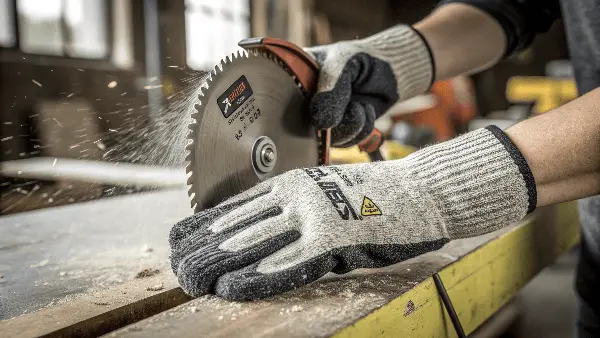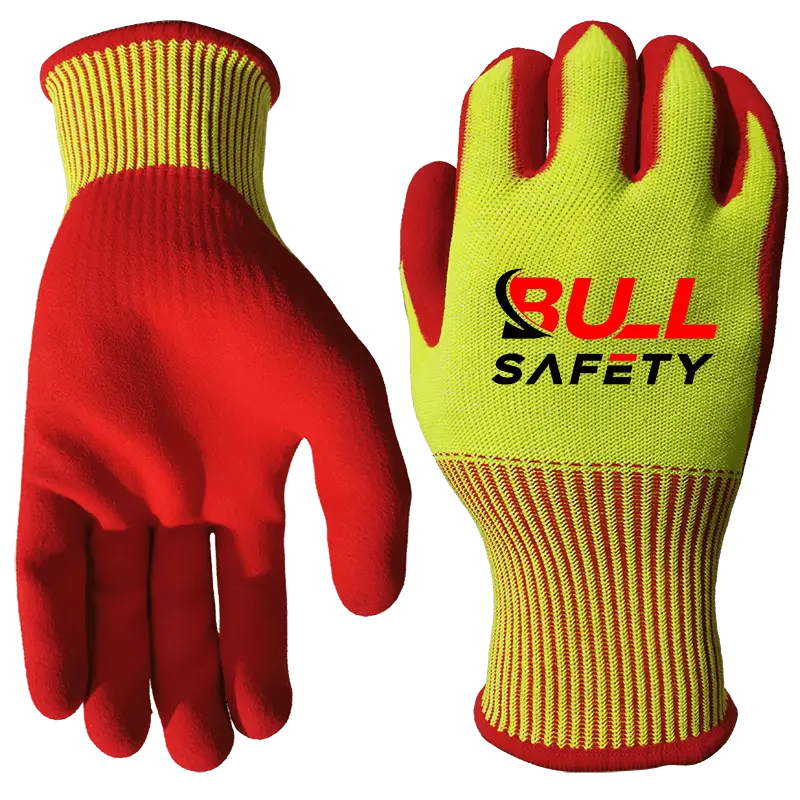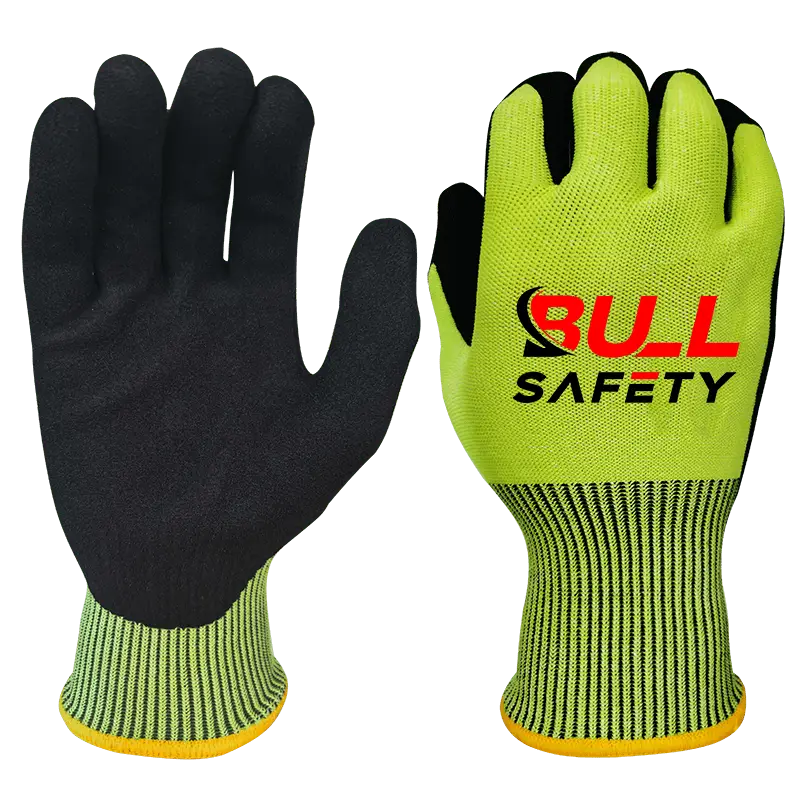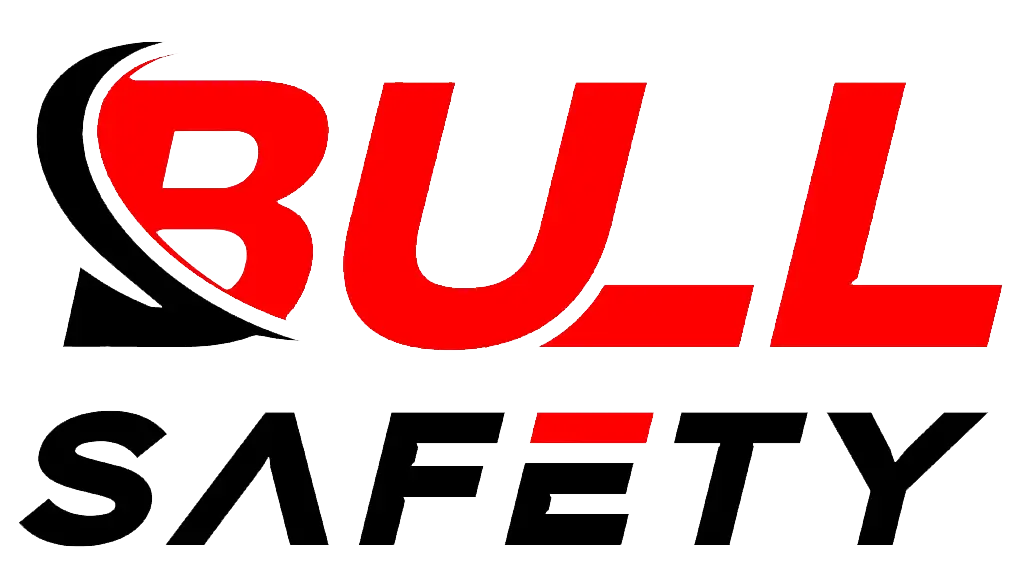
Hand injuries, especially cuts and abrasions1, are some of the most common workplace accidents. As someone who has worked with protective gloves for years, I know firsthand how critical choosing the right gloves2 is for safety.
Cut-resistant gloves are made from high-performance materials like HPPE, Kevlar, or steel mesh, offering protection against sharp tools, glass, and metal sheets.
Many industries rely on cut-resistant gloves3 to protect workers and prevent serious injuries. But how do these gloves work, and what makes them different? Let’s explore.
What Are Cut-Resistant Safety Gloves?
If you work with knives, glass, or metal, regular gloves won’t provide enough protection. So, what makes cut-resistant gloves different?
Cut-resistant safety gloves are industrial gloves designed to reduce the risk of cuts and lacerations. They are made from durable fibers like Kevlar4, HPPE5, or steel mesh to provide various levels of protection.

What Materials Are Used in Cut-Resistant Gloves?
The level of protection6 depends on the materials used. Here’s a breakdown of the most common ones:
| Material | Features & Benefits |
|---|---|
| HPPE (High-Performance Polyethylene) | Lightweight, flexible, and strong; excellent for cut resistance. |
| Kevlar | Heat-resistant and highly cut-resistant, used in automotive & metal industries. |
| Steel Mesh | Provides the highest cut protection, commonly used in food and metal industries. |
| Fiberglass-Reinforced Yarn | Enhances durability and cut resistance with synthetic fiber reinforcement. |
Most high-quality cut-resistant gloves7 combine multiple materials to increase protection. Some also have nitrile or polyurethane (PU) coatings8 to improve grip and durability.
What Are Cut-Resistant Safety Gloves Used For?
Cut-resistant gloves are essential in industries where workers handle sharp tools, rough surfaces, or heavy materials9. But where are they most commonly used?
These gloves are used in metalworking, glass handling, construction, automotive assembly, and other industries to prevent hand injuries.

Industries That Rely on Cut-Resistant Gloves
| Industry | Why Cut-Resistant Gloves Are Necessary |
|---|---|
| Metalworking & Fabrication | Prevents cuts from sharp metal edges10 and machinery. |
| Glass Manufacturing | Protects against broken glass and sharp shards11. |
| Automotive & Assembly | Shields hands from sharp tools and metal parts. |
| Construction | Essential for handling wires, nails, and blades. |
| Warehousing & Logistics | Reduces abrasion risks when handling heavy materials. |
Top Tasks Requiring Cut-Resistant Gloves
- Sheet Metal Handling – Requires high-level cut protection.
- Glass Cutting & Installation – Protects workers from sharp glass edges.
- Carpentry & Woodworking – Shields hands from wood splinters & power tools.
- Waste Management – Ensures safety when handling broken glass & sharp objects.
Understanding Cut Resistance Standards
Not all cut-resistant gloves offer the same protection. So, how can you compare different gloves?
Gloves are tested under ANSI/ISEA 105 (North America) and EN 388 (Europe) to classify their cut resistance levels.
ANSI/ISEA 105 Standard (North America)
Cut-resistant gloves are rated under ANSI/ISEA 105 from A1 (minimal protection) to A9 (extreme protection), helping workers choose the right gloves for their job.
The ANSI standard measures cut resistance using the TDM-100 test, which determines how much force is required to cut through a glove. Gloves are rated A1 to A9, with higher levels offering greater protection.
| ANSI Cut Level | Cutting Force (grams) | Protection Level |
|---|---|---|
| A1 | 200–499g | Minimal |
| A2 | 500–999g | Light |
| A3 | 1000–1499g | Moderate |
| A4 | 1500–2199g | High |
| A5 | 2200–2999g | Very High |
| A6–A9 | 3000g+ | Extreme |
Conclusion
After years of working with cut-resistant gloves, I always stress the importance of choosing the right level of protection for the job.
✅ HPPE and Kevlar gloves provide lightweight flexibility with strong cut resistance.
✅ Steel mesh gloves offer maximum protection, ideal for food and metal industries.
✅ ANSI-rated gloves help determine the correct level of cut protection for your workplace.
If you’re unsure which cut-resistant gloves are right for you, feel free to reach out for expert recommendations!
Footnotes
-
Understanding the prevalence of cuts and abrasions can help in implementing better safety measures in the workplace. ↩
-
Choosing the right gloves is essential for safety; this resource will guide you in making informed decisions. ↩
-
Learn about cut-resistant gloves to ensure maximum protection against workplace injuries. ↩
-
Learn about Kevlar’s unique properties and its role in providing safety in gloves, ensuring maximum protection. ↩
-
Discover the significance of HPPE in safety gloves and how it contributes to cut resistance and durability. ↩
-
Understanding the factors affecting protection levels can help you choose the right gloves for your needs. ↩
-
Exploring the best options can ensure you find gloves that offer superior safety and comfort. ↩
-
Learning about these coatings can enhance your knowledge of glove durability and grip. ↩
-
Understanding these risks can help you appreciate the importance of cut-resistant gloves in protecting workers. ↩
-
This resource will provide insights into the dangers of sharp metal edges and the necessity of protective gear. ↩
-
Exploring this topic will highlight the importance of safety gloves in preventing injuries in glass manufacturing. ↩



